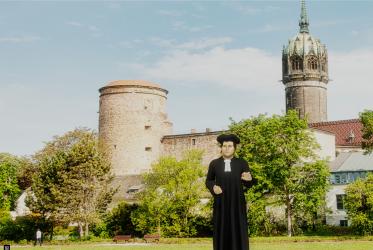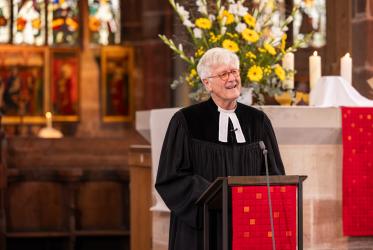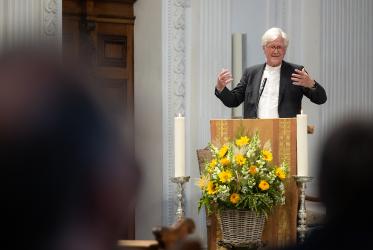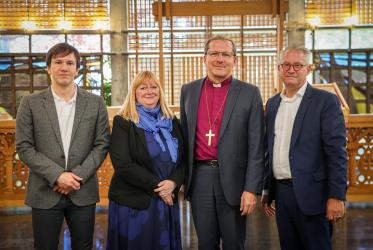EKD - Evangelical Church of Anhalt*
(Evangelische Landeskirche Anhalts)
The region of the Evangelical Church of Anhalt lies between the Flaeming Forest and the Harz Mountains. Its geographical area is almost identical with the former principality, later duchy and finally the free state of Anhalt, which was formally created in 1918. The Evangelical Church of Anhalt today has congregations in 154 villages and towns. The entire region belongs to the German federal state Saxony-Anhalt. Because of its proximity to Wittenberg, the reformers Martin Luther and Philipp Melanchthon had considerable influence on the region of Anhalt. In 1541 all ordained pastors of Anhalt were required to use Luther's translation of the Bible. From 1578 on, the candidates for ordination from Anhalt were no longer ordained in Wittenberg, but in Zerbst/Anhalt. From this time on, one can speak of an independent Protestant Church of Anhalt. Both Lutheran and Reformed faiths co-existed in Anhalt, they were united (Church Union) in 1821.
The Enlightenment of the 18th century had a lasting impact on the region. In 1920 the first constitution of the Church of Anhalt did not include any confessional document as a primary basis. In 1960 Anhalt became a member of the Evangelical Church of the Union (today: Union of Evangelical Churches-UEK). Several congregations of the Anhalt Church have partnership with congregations of the United Reformed Church in the United Kingdom. The Pennsylvania Southeast Conference of the United Church of Christ in the USA is a partner church, and so are the Protestant churches of the Palatinate and Lippe in Germany and the Czechoslovak Hussite Church.
* The Evangelical Church of Anhalt has never directly applied for membership in the WCC and is therefore not counted as a member but is represented through the Evangelical Church in Germany (EKD).





